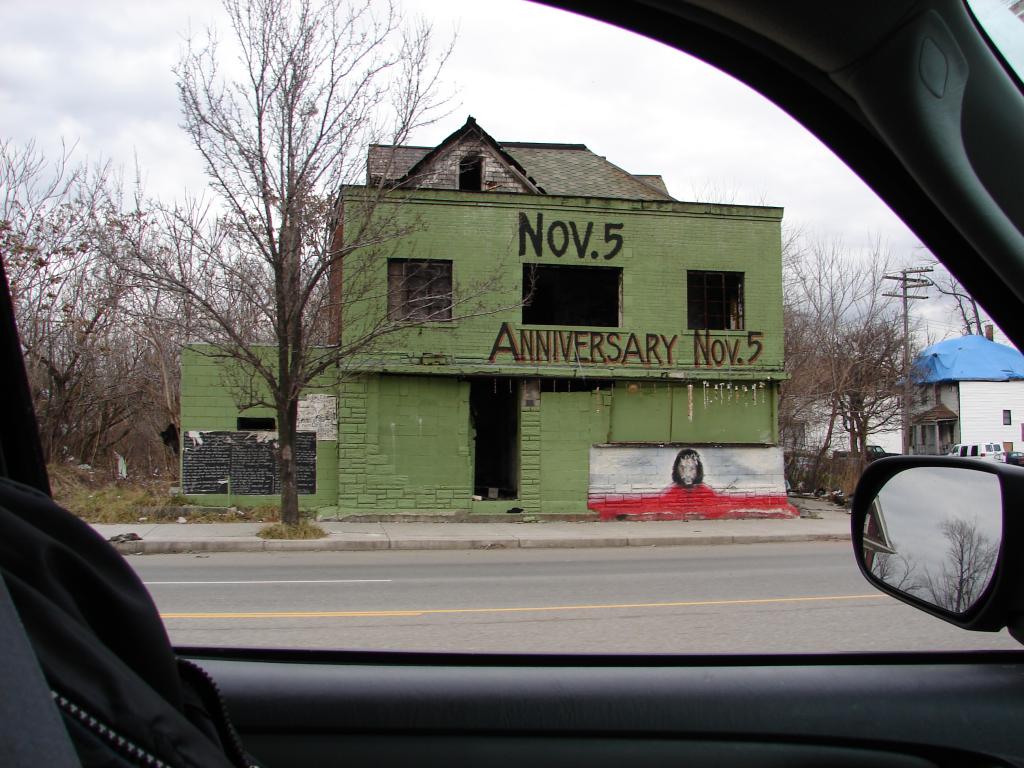Once again, a few impressions of Detroit after our visit there over Thanksgiving.
Growing up, “downtown Detroit” meant pretty much exclusively the Riverfront, which consisted of the Renaissance Center (so named because, in 1977, the city was supposed to be reborn — not quite the success it was hoped to be) and Hart Plaza, site of various ethnic and other festivals in the summer — perhaps because Mom and Dad just didn’t care much about the concept of a “downtown,” perhaps because no one did. (Detroit’s landmark downtown department store, Hudson’s, closed in 1983 and was demolished in 1998.) But city planners and boosters are putting forth considerable effort to (re-)create a “real” downtown, renovating historic buildings and relocating both baseball and football stadiums in the city center and they have even created what they hope to be Detroit’s Rockefeller Park or Millenium Park, its “signature downtown square,” in Campus Martius Park, which we drove past on our way back from an expedition. It’s small — really small; once you add the ice rink, there’s not much space left. Certainly, it couldn’t play host to a Chriskindlmarkt, for instance. But if you look down the streets (we didn’t get out and walk around, or even do much driving) it does look like a real city — so long as you don’t leave the confines of the revitalized area.
So they’re trying.
Will Detroit succeed?
They’ve shed a lot of their financial liabilities, to be sure, in the bankruptcy. The problem is their other liabilities, not so easy to shed: the large numbers of poor, uneducated Detroiters, without job skills. The massive numbers of homes in need of demolition, and the non-viable neighborhoods, with as many vacant lots as homes, adding up to a low tax base and low density which means that they simply can’t pay for city services. The overall undesirability of Detroit for the middle class (much as the boosters trumpet the Whole Foods in the “midtown” — formerly New Center area, you’ll still be challenged to attract people who don’t want to be risk-takers and pioneers but just live an ordinary, safe life). And they’ve been perpetually announcing that renewal was just around the corner while bleeding population all the while.












